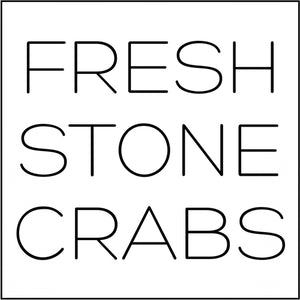With the Florida Panhandle reeling from Michael’s Cat-4 strike and a toxic red tide blooming on Gulf Coast shores, stone crab lovers may be wondering what’s in store for this year’s season, which began at the stroke of midnight on Monday, October 15, and lasts until May 15.
Florida waters provide 99 percent of the country’s stone crab landings, according to the University of Florida, but 65 percent of the state’s total comes from the Keys rather than the Panhandle or Florida’s west coast. Last year, Keys crabbers did struggle after Hurricane Irma blew through the southern part of the state in September, destroying hundreds of traps and pushing the shellfish farther offshore. “Those traps are the fishermen’s livelihood,” says Shelly Abramowitz, the founder and CEO of Fresh Stone Crabs, a Miami-based supplier that overnights fresh claws from the Keys to any doorstep in the continental U.S. “So, when the trap lines get ripped up by hurricane winds, these guys take a major hit.”
While South Florida avoided the devastating effects of Hurricane Michael earlier this month, another natural disaster seems to be contributing to low initial catches on the Gulf Coast during the first week of the season. The recent outbreak of the red tide organism, Karenia brevis, has been killing marine life on the Gulf side of the state for some time, with high concentrations along the Panhandle and Tampa-area beaches. While the Florida Fish and Wildlife Conservation Commission says it’s still safe to eat the edible muscle meat of stone crabs collected in these areas, the decreasing oxygen levels caused by the red tide could have a major impact on adult stone crabs living closer to shore.
“We are concerned about the low catch in the region impacted by red tide,” Ryan Gandy, a leading crab biologist with the Florida Fish and Wildlife Conservation Commission, told the Miami Herald last week. “In August, we started a pre-season collaboration with commercial stone crab fishermen off Pine Island [near Fort Myers, in southwest Florida] to sample offshore of Sanibel. The results of the effort show the nearshore catch was impacted by the algae bloom.”
While the Keys aren’t expected to be affected by the algae bloom, some South Florida crabbers have reported sparser-than-usual counts in their first week reports. “The catch this year in both the Keys and the west coast is very low and [as a result] prices are higher than ever,” Abramowitz says.
So, what’s in store for this year’s season? It’s still too soon to tell, but crab harvesters remain determined and hopeful, particularly in the Keys. A successful start to the Florida lobster season (which began in August and lasts until March) is one bright light. “My guys will take the same [lobster] traps out and change the bait and entryways to start fishing for stone crabs,” says Abramowitz. “They’ve caught as much as ten thousand pounds of lobster this year compared to their usual three to five thousand pounds. It’s been a great season for that, so hopefully that means a really good stone crab season.”
--
